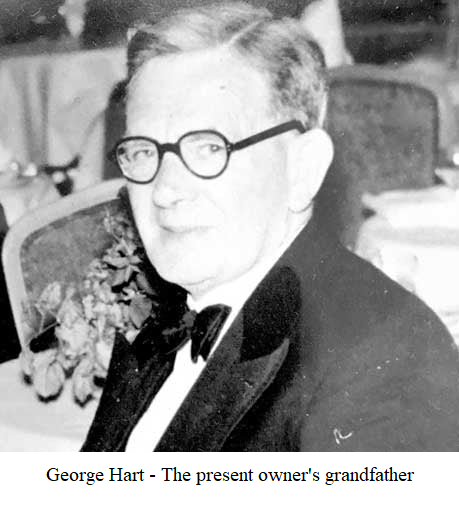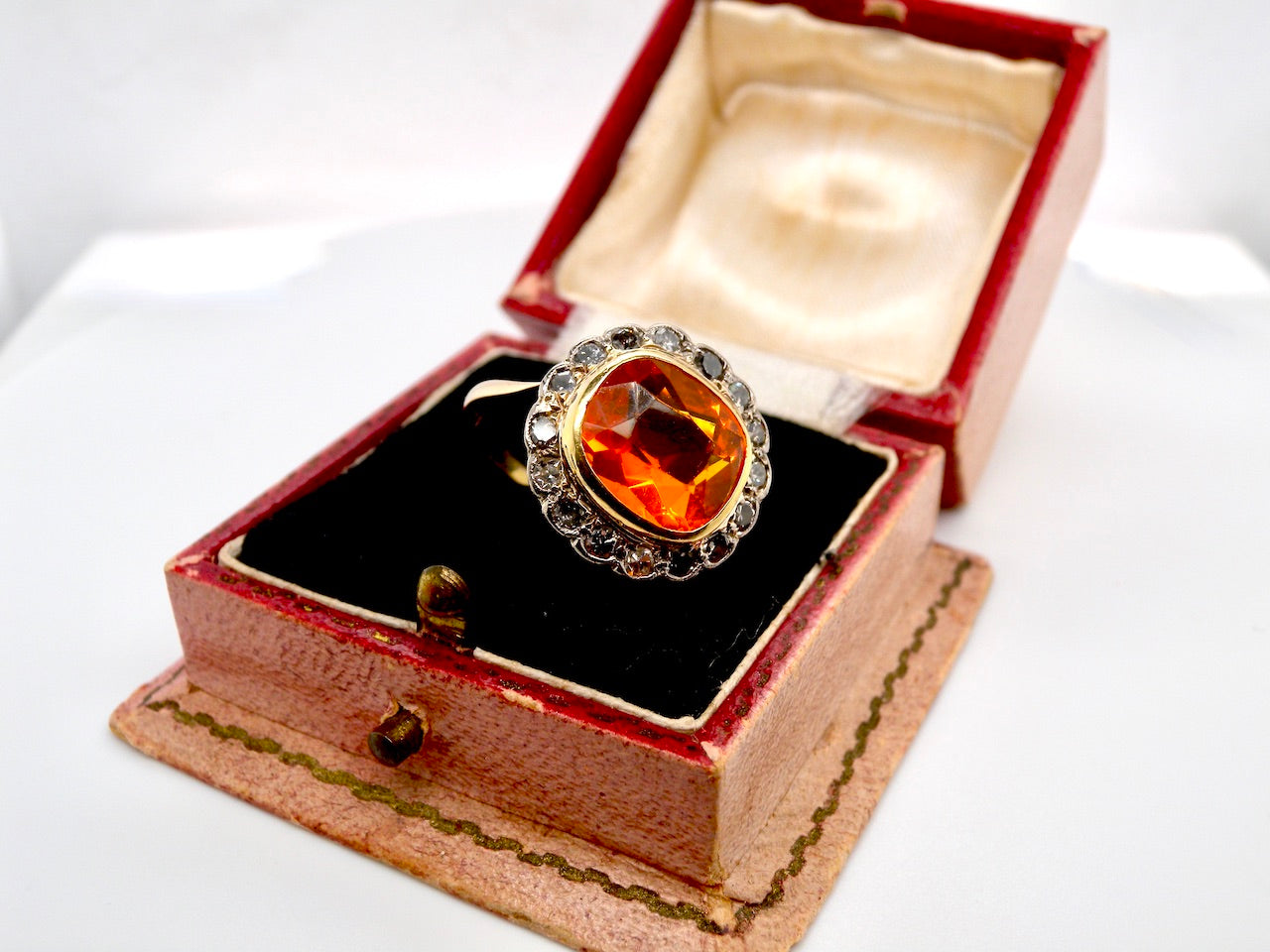Many people consider diamonds to be the most unique, stunning, and sought-after gemstones on the planet. These exquisite gemstones have been around for centuries, although many people are unaware of the interesting history that surrounds these coveted stones.
Some of the diamonds on display in museums are millions of years old but will probably still be there after even more centuries for further generations to see and enjoy!
Where Did The Word "Diamond" Come From?
The word “diamond” is a derivation of the Greek word “adamas”, which in English, means indestructible and unconquerable, a fitting name for a gemstone that is well known for its hardness and durability!
There was plenty of superstition surrounding diamonds, with people believing that they were magic, spiritual, mystical, and even that they had some sort of divine connection! Diamonds were even used as currency during ancient times!
Plato believed that the gemstones were actual living beings that symbolised heavenly spirits! According to Hindu mythology, diamonds provide protection for wearers from thieves, water snakes, fire, evil spirits, and poison. To the Romans, warriors who wore diamonds into battle, would be stronger and unbeatable, and according to others, every diamond when worn, had magical energy capable of completely curing the sick and wounded.
The Origin of Diamonds BC
Some believe that diamonds were originally discovered by the Dravidians in India between 2500 and 1700 BC, in the Bronze Age, during the Indus Valley Civilization. Others, on the other hand, believe that the gemstones were first discovered closer to 1000BC, in India.
However, the first recordings and written reports of the stones began to appear between 400 and 300 BC, in the Sanskrit texts, Ratnapariksha and Arthashastra.
The first recorded method of ranking and grading the characteristics and quality of diamonds are noted in Ratnaparikhsa, while the earliest account of the gems being traded and used as a source of revenue or currency, is seen in Arthashastra.
In both texts, however, reference is made to the magic and power of diamonds, saying that wearers would, irrespective of the type of threat, see “dangers recede from him”. Also in the texts, is the description of diamonds as “the jewel above all others” and the most sought-after, desired, possession in the culture of India.
An early reference is also made in The Bible, in Jeremiah 17.1, of the diamond being used as a tool for the first time.
The King of Macedon, Alexander the Great, invaded India in 327 BC, and returned to Europe with the exquisite gemstones in his possession that he had acquired in the area, making this the first time that the stones were exported.
The earliest reference to diamond mining in European history comes from a Greek sailor named Eudoxus Cysicii, who mentioned the deep diggings he had seen next to a river, in 327 BC.
AD And The Rise Of Diamonds
Diamonds were used as a type of currency and also as a symbol of status and power. Later on, in 1074, the gems started being used as jewellery, after they formed part of the decoration in the crown of the queen of Hungary.
Through the next thousand years or so, diamonds started to become part of our history, with powerful leaders and royal families exchanging them as a mark of their loyalty to each other, and to seal alliances.
The diamond industry exploded!! Mines appeared in countries and continents across the globe, with the beautiful gemstones eventually becoming the symbol of love and commitment as we know it today.
Famous Diamonds Through History
The first famous diamond, the Koh-i-Noor (Mountain of Light) was found early in the 13th century, in the Golconda mines in India. Weighing more than 790 carats, many believed that the diamond had magic powers. According to legend, whoever owned the Koh-i-Noor, would rule the world.

The diamond had many different owners between the time it was discovered and today, often resulting in violent, bloody battles. This led some people to believe that the Koh-i-Noor is, in actual fact, cursed, and would bring bad luck to whoever owned it. Currently, the diamond is part of the Queen Mother’s crown and is kept in the Tower of London, in the United Kingdom.
The very first diamond engagement ring was commissioned by Archduke Maximillian of Austria in 1477 when he used it to propose to Mary of Burgundy, with whom he was head over heels in love. This set the trend in those days to use diamonds when proposing marriage, thus creating the tradition that is followed by many couples these days.
The famous Hope Diamond was discovered in the Golconda mines in India in 1638, by French traveller and gemstone merchant, Jean-Baptiste Tavernier, during one of the six voyages he made to the area. He sold the “Tavernier Blue” diamond, which weighed an impressive 116 carats, to Louis XIV of France, for about 172,000 ounces of pure gold, as well as a letter of ennoblement. This stunning gemstone has been on display since 1958, at the National Museum of Natural History, in Washington DC.

Although Tavernier is most famous for his discovery of the Hope Diamond, he has also been associated with the discovery of several other impressive diamonds. One of these is The Orlov, which he discovered during the early 1700s, an exquisite stone that is mounted in the Imperial Sceptre of Catherine the Great.
Then there was the “Affair of the Diamond Necklace”, as it is referred to today, a scandal that involved Marie Antoinette, Queen of France in the 1780s, and the reason for her fall from grace. In short, the people who claimed to be purchasing the necklace on her behalf, and with her permission, negotiated a price, and then stole the expensive piece of jewellery, with the claim that the Queen herself would pay for it.
The thieves fled the country with the necklace, with the intention of selling it, but were eventually arrested. Even though the Queen was completely innocent, there were those who believed that she played a part in planning the theft. From then on, the public looked at her in a different light which led to a significant decrease in her popularity, as well as lost trust between the people of France and their leaders.
The famous Cullinan Diamond, at 3,106 carats, and twice as large as any other diamond known to man, was discovered in South Africa, at the Premier Mine in Pretoria. This enormous gemstone was eventually cut into several large and small stones, which included the Cullinan I and II, both of which are set in the Crown Jewels of the UK.

The Cullinan I, the largest cut diamond in the world, also referred to as the Great Star of Africa, is set in the top of the Queen’s Sceptre.
While there were many organizations created for new sources of diamonds, the original depot in India, Golconda, was still the most prominent source for the gemstones. The first record of the Archduke Joseph Diamond, a stone weighing 78.54 carats, appeared in 1933.
Named after Archduke Joseph of Austria, it is just as important, valuable, and famous as the Golconda Koh-i-Noor and Hope diamonds. The Archduke Joseph diamond was sold in 2012, at an auction at Christie’s, for the staggering amount of 21 million dollars, which is a world record for any diamond coming from Golconda!
Increased Demand And Supply
The demand for diamonds grew in leaps and bounds, and their function evolved as well, which naturally resulted in the supply for the gemstones increasing significantly too.
Vasco da Gama helped to increase the number of diamonds being exported to Europe from India, by opening a direct sea-route to India in the early part of the 1500s.
Different Shapes And Sizes
With diamonds increasing in popularity, it got to a stage where the gemstones had to take on different shapes and sizes, to attract attention. For instance, the “Rose Cut” was developed to look like a rose, which so impressed Mary, Queen of Scots, that she gifted Queen Elizabeth with a heart-shaped diamond ring in 1562, as a sign of the great friendship they shared.
The Discovery Of New Diamond Mines
While Europe was going through all of this and more, other countries throughout the world were striving to discover diamond mines on their own turf. They also wanted to enjoy the advantages of the value of these stunning gemstones.
The first diamond mines were discovered in Brazil in 1725 and had mined more than 17 million carats worth of diamonds by 1870!
Alluvial deposits were discovered in 1829, in the Ural Mountains in Russia, which resulted in the country’s first diamond mines.
A few years later, in 1851, the first diamonds and mines were recorded in Australia, in the Bathurst region of New South Wales.
Just a few years later, in 1866, saw the start of the diamond boom in South Africa, which carried on, with the discovery of several more mines in 1870, near the Orange River. The diamond boom exploded in 1871, with the discovery of the Kimberley and De Beers mines, which led to a bigger supply of diamonds to the rest of the world, coming from South Africa.
De Beers Consolidated Mines Ltd became a leader in the diamond industry, and by 1888, was incorporated in South Africa, and eventually controlled the global diamond trade.
Enter the “4 Cs”
The diamond industry grew significantly from the late 1800s to the early 1900s, which resulted in new suppliers popping up all over the world. Systemic measures were developed to help both diamond buyers and sellers with a consistent method to measure the value and quality of their diamonds.

The Gemological Institute of America was created in 1931, and it was here that the “4 C’s” (clarity, cut, carat, and colour) was invented, not only to help measure the quality of each diamond but also as a world-wide grading system for diamonds.
Modern-day Diamonds
Diamonds are now so widely available, and the supply and demand levels so high, that people the world over can own one.
With the many new diamond sources appearing came conflict, because of the value of the stones.This prompted the development ofthe Kimberley Process in Kimberley, South Africa, to stem the trade in what was termed, “conflict diamonds,” and to make sure that the diamond market was not being used to finance violence in the industry.
The United Nations General Assembly took the first steps in December 2000, to create an international certification for rough diamonds, called the Kimberley Process Certification Scheme (KPCS). The Responsible Jewellery Council (RJC) was created in 2005, in continuation of this trend, to develop certifications, ethical standards, and the best practices in the diamond industry.
While this was happening in the world, a new gemstone was discovered in space, that made the Hope, Archduke Joseph, and Koh-i-Noor diamonds look like minute grains of sugar!
Lucy, the largest diamond known to mankind, was found in 2004 by the Harvard-Smithsonian Centre, who named it, without hesitation, after the famous Beatles song, “Lucy in the sky with diamonds.”
After Lucy was discovered, scientists firmly believe that the earth’s sun will also become a diamond, in the not too-distant future. Until then, however, the diamonds being discovered on earth must suffice, like the new one that was discovered in South Africa, that was front-page news, the Cullinan Heritage, a Type IIa* rough diamond, weighing 507.55 carats.
*Type IIa, is the description for a particular and rare chemical composition used only for the highest grade, purest, brightest of diamonds. There are only around 2% of Type IIa diamonds in the world, and this includes those found in Golconda mines. One of the defining traits of these diamonds is their total lack of nitrogen. The Cullinan Heritage was bought by the largest jeweller in Hong Kong, Chow Tai Fook, for the enormous amount of $35.3 million

It took about 47,000 hours to cut the Cullinan Heritage into more than 11,000 smaller gems, which were all used in the manufacture of just one necklace.
The Blue Moon, however, weighing 12.3 carats, became the most expensive diamond ever, when it was sold at a Sotheby’s auction for a whopping $48.4 million!
Even more impressive, was the Lesedi La Rona, or “our light” diamond, weighing 1,109 carats, discovered in Botswana on 29 June 2016. According to a chairman at Sotheby’s, it was the find of a lifetime and one of the biggest diamonds ever, to be offered for sale at a public auction.

In Conclusion
There is no doubt that diamonds have a beauty, strength, and durability that is unmatched by any other natural substance in the world. It goes without saying then, that the diamond you wear is not simply a symbol of love or a piece of art, but instead, an extremely interesting piece of history to be cherished forever!
We have a fine collection of beautiful diamond jewellery in our store here at Vintage Tom, so please browse our store and if you need any questions answered about any of our jewellery please get in touch.



